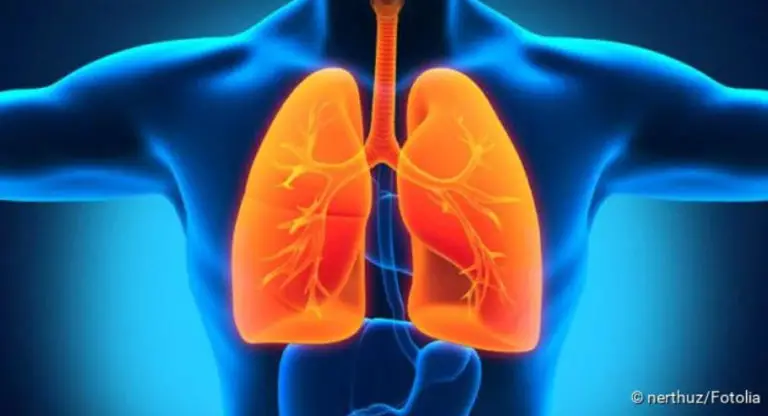Tonsillitis: symptoms, treatment, causes
Tonsillitis: symptoms, treatment, causes
Tonsilitis (tonsillitis, angina tonsillaris) is an inflammation of the palatine tonsils. This usually manifests itself as sore throat and difficulty swallowing. Often tonsillitis can be treated with medication. Only if the tonsils become inflamed very frequently are they removed. Read all about symptoms, treatment and home remedies for tonsillitis!

Brief overview
- Common symptoms: Sore throat, difficulty swallowing, reddened and coated palatine tonsils, reddened throat wall, swollen lymph nodes
- Treatment: home remedies (neck compresses, gargles, lozenges etc.), antibiotics if necessary, surgery
- Special form: Chronic tonsillitis (recurrent tonsillitis)
- Risk of infection: high in the first few days, via droplet infection
- Complications: Inflammation of the middle ear and paranasal sinuses, earache, peritonsillar abscess, rheumatic fever, sepsis
Symptoms: This is how tonsillitis manifests itself
Typical symptoms of tonsillitis are sore throat and difficulty swallowing. They usually develop within a few hours. The palatal tonsils on both sides of the uvula are clearly reddened, swollen and whitish in colour.
The throat wall is also reddened and the lymph nodes in the angle of the jaw are often noticeably enlarged. This is accompanied by unpleasant bad breath as another typical sign of tonsillitis. Often, the patients feel weak and dull, often accompanied by high fever. But tonsillitis without fever is also possible.
In the case of tonsillitis, the tonsils in the pharynx swell up and are reddened
Mostly it is bacteria, especially streptococci, that cause tonsillitis. Pus on the tonsils – recognizable by white spots – is a typical sign of a bacterial infection. Coughing or a cold, on the other hand, are not symptoms of bacterial tonsillitis, but indicate a less frequent viral infection (usually caused by rhinoviruses, coronaviruses or adenoviruses).
In patients aged 15 years and older, a special criteria system (Centor Score) helps the physician to estimate the probability of a streptococcal infection (more precisely: with Group A streptococci):
- Fever above 38 degrees
- no cough
- swollen cervical lymph nodes
- coated palatine tonsils
If all four symptoms of tonsillitis occur, the disease is caused by streptococci in 50 to 60 percent of cases.
This score can only indicate a tendency, but cannot provide a diagnosis. Only the analysis of an almond smear provides certainty.
Tonsillitis as a symptom of other diseases
Tonsillitis is not only a clinical picture. It can also be a symptom accompanying other diseases. Examples of this are:
Tonsillitis in whistling glandular fever: In about six percent of cases tonsillitis occurs as a symptom of this viral disease. The tonsils are covered with dirt and the lymph nodes in the angle of the jaw, in the area of the neck, throat and also the groin are often very swollen.
Tonsillitis symptoms in diphtheria: Diphtheria is a dangerous bacterial infection, often accompanied by laryngitis or tonsillitis. The almonds are covered with a greyish-white coating. If you try to remove the plaque, it usually bleeds. Those affected often have sweetish bad breath.
Tonsillitis symptoms in scarlet fever: Tonsillitis in scarlet fever manifests itself in deep red palatal tonsils covered with purulent specks. The wall of the throat is also usually reddish in colour. Small, whitish deposits may appear on the oral mucosa of the inner side of the cheeks.
Tonsillitis symptoms in herpangina: In tonsillitis caused by Coxsackie A virus (herpangina), the tonsils are only slightly swollen. In addition, small vesicles (aphthae) form on the mucous membranes of the palate and the cheeks, which leave flat, painful defects after bursting. Fever, difficulty swallowing and a distinct feeling of illness are further symptoms.
Tonsillitis symptoms in Angina Plaut-Vincent: Angina Plaut-Vincent is a rare form of tonsillitis. Usually only one side of the tonsil is inflamed, and there is also bad breath. Patients with this clinical picture usually have no fever and usually feel relatively healthy.
Tonsillitis symptoms in syphilis and gonorrhea: Syphilis (syphilis) is a sexually transmitted disease that occurs in several stages. In the second stage, tonsillitis sometimes develops. Symptoms of this so-called angina specifica are swollen, reddened tonsils with a veil-like, grey-white coating. Fever does not occur.
Gonorrhoea – another venereal disease – can also lead to tonsillitis, among other things.
Tonsillitis symptoms in Kawasaki’s syndrome: Kawasaki’s syndrome is an inflammatory vascular disease in children that can cause a variety of symptoms. One of them is tonsillitis.
Tonsillitis: Treatment
Depending on the severity and frequency with which the disease occurs, different treatment strategies may be appropriate. Home remedies often help against mild sore throats. Conventional medicine uses antibiotics for bacterial tonsillitis. In the case of chronic or frequently recurring tonsillitis, surgery may be necessary.
If complications such as a peritonsillar abscess (encapsulated inflammatory focus in the pharynx) occur, inpatient treatment in a hospital may be necessary.
Self-help for tonsillitis: What to do at home?
Not every throat infection needs to be treated by a doctor. Mild tonsillitis often develops in the course of a cold. By resting and using home remedies you can then do something about your tonsillitis yourself. The following, for example, can help to alleviate symptoms
- Neck wrap
- Saline solution for gargling
- humid room air
- sufficient drinking (no acidic drinks, e.g. juice)
- prefer to eat soft, cool, not very spicy food
- Various herbal remedies can also help with tonsillitis.
What else you can do at home and the limits of home remedies for tonsillitis can be found in the article Tonsilitis: Home remedy.
Tonsillitis: When do you have to see the doctor?
Pain is the most annoying symptom of tonsillitis, especially in the first days. First of all, you can try to relieve the pain with measures such as neck wraps or lozenges, special lozenges as well as sprays and antiseptic and local anaesthetic gargle solutions from the pharmacy.
If these measures are not sufficient, the painkillers paracetamol or ibuprofen can relieve the symptoms. Both have analgesic (analgesic) and antipyretic effects, ibuprofen also has an anti-inflammatory (antiphlogistic) effect. However, you may only use these substances if you have no allergies to the active ingredients.
Painkillers only relieve the symptoms, they do not fight the pathogens.
If, despite rest and “gentle support”, the immune system is unable to eliminate the viruses or bacteria that cause the disease, or if the tonsillitis is very severe, you should consult a doctor. He examines throat, mouth and usually also nose and ears with special equipment. He may also perform a rapid test for streptococcus.
To do this, the doctor uses a cotton swab to take a smear from various parts of the throat, and the result is available after only a few minutes.
In some cases the doctor will perform an ultrasound examination, for example to rule out an abscess.
You have a sore throat, with painful difficulty swallowing. Pus spots on the tonsils are usually only visible when bacteria cause the inflammation. In a viral infection, the tonsils are rather tense and slightly reddened, but can also show greasy grey-white coatings, as in Pfeiffer’s glandular fever. However, laryngitis can also cause a sore throat.
It is a kind of vicious circle: the more often you have tonsillitis, the more susceptible you are. This is due to the fact that the small tubules of the tonsils scar in the event of inflammation. Behind this, viral or bacterial infections are particularly easy to form. In some patients the quality of life suffers so much from the constant inflammation that the tonsils are removed.
The guideline now states that tonsils should not be operated on until one has had six or more bacterial tonsillitis a year that require antibiotic treatment. A high yardstick! Maybe too high. One must weigh up the individual case carefully and, if necessary, operate if this relieves the symptoms – even if, according to the guidelines, surgery should not yet be performed.
Medical treatment for bacterial tonsillitis
If the doctor can detect streptococcal tonsillitis or if it is very likely, the doctor usually prescribes antibiotics, often of the type penicillin V.
Those who do not tolerate this active substance are given other antibiotics (erythromycin, 1st generation cephalosporins), which also work well against streptococci. So-called reserve antibiotics (e.g. clindamycin) are only used if the disease-causing bacteria have become insensitive (resistant) to the standard active substances or if the patient cannot take the latter.
Resistant bacterial strains can develop during any antibiotic therapy. For this reason, antibiotics should not be used prophylactically for tonsillitis, but only if bacteria are actually the cause of the inflammation.
Antibiotics are only effective against bacteria, so they are not used for viral infections. They are only necessary in the case of viral tonsillitis if there has been an additional bacterial infection on the diseased mucous membranes (superinfection).
Caution is required with whistling glandular fever (caused by the Epstein-Barr virus). The antibiotics amoxicillin and ampicillin can then cause a rash and should therefore not be used
The treatment of viral tonsillitis is therefore limited to the treatment of symptoms such as fever and pain. In addition to the painkillers mentioned above, home remedies and physical rest can also accelerate the recovery process.
It is particularly important to take care of yourself physically when suffering from Pfeiffer’s glandular fever. In this clinical picture, the internal organs can swell and there is a risk of rupture of the spleen. This complication is life-threatening and requires hospitalization.
You should also seek medical attention in the following situations in case of tonsillitis:
- abnormal breathing sounds
- difficult breathing
- severe unilateral pain, especially if you chew, swallow or open your mouth
- Illness duration of more than one week without improvement
- acute rheumatic fever in the family
- severe general diseases
- high fever that cannot be reduced with medication
Chronic tonsillitis: Do what?
Some patients get a chronic tonsillitis. In contrast to acute tonsillitis, chronic tonsillitis is a chronic inflammation of the tonsil tissue.
It can occur when germs “hide” or encapsulate themselves in the depressions (crypts) of the almonds. They cannot be fought by the immune system. Doctors refer to this form of recurrent tonsillitis as recurrent tonsillitis.
If the bacteria are scattered through the bloodstream into the rest of the body, they can also cause or aggravate other diseases. Then surgical removal of the tonsils makes sense.
You can read more about the symptoms and treatment of chronic tonsillitis in the article Chronic tonsillitis.
Tonsillitis: When to operate
If tonsillitis occurs frequently, the tonsils are usually removed completely. This so-called tonsillectomy is one of the most frequently performed procedures in this country.
Children benefit most from the procedure. It has been proven, for example, that they are less frequently absent from class after tonsillectomy due to illness. Nevertheless, a throat infection can still occur after a tonsillectomy.
How a tosillectomy is performed, what risks it involves and when it can be useful is explained in the article Tonsillectomy.
Tonsillitis: Treatment with homeopathy
With the question “What helps with tonsillitis?” many patients turn to an alternative practitioner. Alternative methods of treatment can also contribute to relieving the symptoms of tonsillitis. Homeopathy is particularly popular. But it is not a substitute for a necessary orthodox medical treatment.
Depending on the symptoms, the homeopathic remedies Aconitum, Belladonna, Apis or Pyrogenium are recommended for acute tonsillitis. Patients should seek advice from an experienced therapist or pharmacist.
Tonsillitis: Where it comes from
Tonsillitis is an inflammation of the palatine tonsils, which are located on the right and left side of the throat. It is a common occurrence. In total, more than one million people in Germany fall ill every year. Tonsilitis occurs particularly often in children between the ages of six and twelve.
Frequently, those affected are previously ill with a flu-like infection. This weakens the immune system, which bacteria or viruses can take advantage of – they attack the mucous membrane of the throat. Mostly bacteria of the streptococcus type are the pathogens. The specks or yellow-white coatings on the inflamed tonsils, which are typical of bacterial tonsillitis, consist of dead bacteria and dead cells of the immune system. In most cases the diagnosis is a unilateral tonsillitis. Bilateral tonsillitis is less common.
Several different bacteria are responsible for the inflammation in the so-called angina plaut vincenti. This form of tonsillitis only occurs in adulthood. An ulcer forms on one side of the throat. The palatal tonsils are covered with a foul-smelling green-grey mucus. The palatal tonsils on the other side are often completely inconspicuous.
The inflammation of the tonsils usually heals by itself. Sometimes, however, medication, especially antibiotics, must be given to accelerate the healing process.
Tonsillitis: causes and risk factors
Tonsillitis can be triggered by various pathogens. These can easily stick to the fissured surface of the palatine tonsils. In principle this is even good:
As part of the immune system, the palatine tonsils are responsible for intercepting pathogens that have entered the pharynx and thus preventing them from infecting the respiratory tract. The cells in the palatine tonsils produce very specific antibodies that attach themselves to the surface of the invading pathogens and thus render them harmless.
However, if the immune system has not been able to fend off a germ effectively, for example because it was weakened by a flu-like infection, tonsillitis can develop.
Is tonsillitis contagious?
Since the pathogens are also found in saliva, the purulent tonsillitis is contagious. If those affected cough or sneeze, other people can be infected with the pathogens via droplets containing germs. Doctors refer to this as droplet infection.
Since the risk of infection with tonsillitis is particularly high in the first few days, contact with other people should be avoided during this time.
If you take an antibiotic, the risk of infection can be greatly reduced after just one day. If none is prescribed, for example in the case of viral tonsillitis, the infection is contagious for one to two weeks.
Unlike chickenpox, for example, one is not immune to a new infection after tonsillitis.
Tonsilitis: examinations and diagnosis
Severe sore throat and difficulty swallowing, fatigue and fever often lead those affected to the doctor. He will first ask some questions about the course of the disease:
- How long have you been suffering from the symptoms?
- Do you have a fever?
- Do you have a rash?
- Do you suffer from respiratory distress?
- Does pain occur when you chew, swallow or open your mouth?
- Has the tonsillitis newly developed (acute tonsillitis) or do you suffer from recurrent tonsillitis (chronic tonsillitis)?
- Do you have pain in your abdomen?
Physical examination: The doctor will then check whether the throat and palatine tonsils show any redness, swelling or white coating. He also palpates the lymph nodes in the neck and back of the head. They can be swollen with tonsillitis.
The examination and the described complaints are usually sufficient for the doctor to be able to make the diagnosis “tonsillitis”.
Throat swab: If it is suspected that the tonsilitis is caused by certain bacteria (beta-hemolytic group A streptococci, or GABHS for short), the doctor will take a throat swab. To do this, he strokes the back wall of the throat with a cotton swab to take a sample of the saliva found there. With a rapid test or in the laboratory, any streptococci present in saliva can be detected.
Blood test: Like the throat swab, a blood test is not a routine procedure for the clarification of tonsillitis, but only necessary in individual cases. For example, it is examined whether and which inflammation values are elevated in the blood.
Tonsillitis: course of the disease and prognosis
The course of tonsillitis depends on many factors. These include the type of pathogen, physical condition and resistance and climatic factors. The intake of an antibiotic shortens the duration of the disease.
Tonsillitis: Duration
Unless complications occur, the symptoms usually subside significantly within three to five days. After one to two weeks almost all patients are free of symptoms.
Complications of tonsillitis
Sport should be avoided in case of tonsillitis, as the immune system already needs a lot of energy to fight germs. Otherwise, tonsillitis can become chronic or cause complications. Physical exertion also increases the risk of bacteria being carried into other organs via the bloodstream.
Complications also often arise when antibiotic therapy has not been carried out for a sufficiently long time.
Otitis media and sinusitis: Otitis media and sinusitis are among the purulent complications of tonsillitis. They occur when aeration of the so-called auditory trumpet (connection between the pharynx and the middle ear) or the paranasal sinuses is prevented by the swelling of the mucous membrane.
Earache or pressure pain over the maxillary and frontal sinuses are typical symptoms.
Peritonsillar abscess: In case of tonsillitis with peritonsillar abscess an inflammatory focus in the pharynx is encapsulated. In most cases, the wall of the throat then bulges inwards on the affected side. Often affected persons also have severe sore throats and can only open their mouth minimally (lockjaw). People who smoke during tonsillitis more often develop an abscess.
Rheumatic fever: Rheumatic fever usually occurs three weeks after streptococcal tonsillitis. This is a kind of autoimmune reaction triggered by cell components of streptococci. In most cases, those affected get a fever again. In addition, a circular, reddish skin rash and painful joint inflammation can occur. The latter can last for many years in the event of unfavourable developments.
In addition, rheumatic fever can lead to the development of heart inflammation. Affected is either the inner layer of the heart (endocarditis), the heart muscle (myocarditis) or the pericardium (pericarditis). These inflammations can cause the heart to no longer beat steadily.
Acute rheumatic fever can also affect the nervous system and manifest itself as so-called minor chorea. This disease appears a few weeks to months after the tonsillitis has subsided. Symptoms are lightning like shooting movements of the arms, throat and pharynx. These twitches occur suddenly and cannot be controlled.
Inflammation of the renal corpuscles (glomerulonephritis): This acute inflammation of the kidneys sometimes develops six to twelve days after the tonsillitis has subsided. The sign is blood in the urine. Sometimes, however, only very small amounts of blood are involved, which are hardly visible to the naked eye, but can only be reliably detected in the laboratory.
Sepsis: Sometimes bacteria enter the bloodstream directly. This is called sepsis or blood poisoning. Sepsis is a severe clinical picture in which many organs of the body can lose their ability to function.
Complications in children
Common complications of tonsillitis in childhood are inflammation of the middle ear (otitis media) and sinusitis. Sometimes one to four weeks after streptococcal tonsillitis, rheumatic fever with joint inflammation, inflammation of the heart valves, pericardium or heart muscle also develops.
Streptococci can also cause kidney inflammation in children. In severe cases the kidney can even fail completely. Mostly, however, the children recover within a few days.
Complications during pregnancy
Pregnant women have a higher risk of developing tonsillitis. Also, there is a greater risk of developing complications in pregnant women. Therefore pregnant women with tonsillitis should always consult a doctor. An ENT physician is responsible.





